The internal combustion engine, which now stands on almost every car in the world, was created so long ago that now it is even difficult to imagine. After all, the date of the first sample of such a unit is considered to be 1860.
That is, the mechanism, which, albeit undergone a number of changes, but remained the same device, was created in the nineteenth century. The reason for this popularity was the simple and understandable principle of operation of an internal combustion engine.
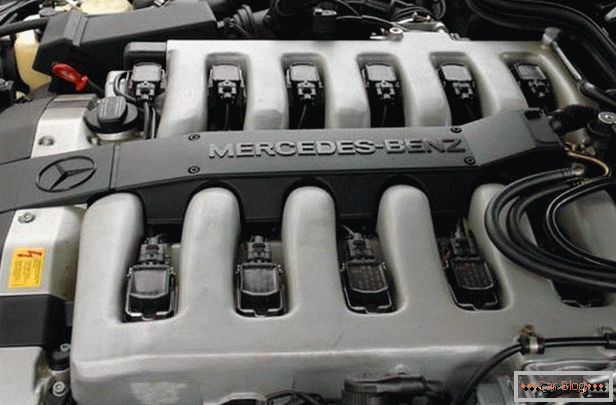
We will conduct a brief excursion into history. The already-mentioned invention of Lenoir, created in 1860, had a number of design flaws, which seriously reduced its efficiency. Therefore, this engine is not widely spread.
But it became a fruit for reflection of another designer, whose name also went down in history. They became the German Nikolaus Otto, who was able to modify the mechanism by creating a two-stroke engine.
В итоге operation of the internal combustion engine Отто показала КПД выше 15%, таким образом полностью вытеснив двигатели первооткрывателя. Конечно же, созданный в 1863 году двигатель не был верхом совершенства.
And after some time, after significant corrections of his mechanism, Otto produces a four-stroke internal combustion engine - the ancestor of those engines, the work of which we see every day, watching modern vehicles.
В разное время механизм, созданный Отто многократно улучшали. Но principle of operation of the internal combustion engine существенно не изменился.
Four cycles of Otto - so is the work of the engine
The ingenious German created a principle that no one was able to not only transcend, but also significantly improve so as to supplant the original.
The work of the internal combustion engine is four repetitive actions that are called the "Otto cycle." The first is the intake stroke, then - compression, working stroke, and finally - release. To understand how the engine works, consider each cycle of the engine separately.
Recommended article: How to make the acoustics in the car better than it was originallyStep one in the operation of an internal combustion engine - intake
During this cycle, the fuel, mixing with air, enters the cylinder due to the action of the piston.
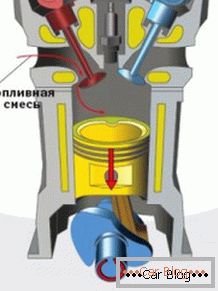
The intake valve is in the open state. By the way, nowadays there is a mass of engines, where there are several valves at once. And this is done in order to increase engine power.
Another way to increase the power of steel engines in which the gas pedal can adjust the amount of fuel entering the cylinders, by keeping the valves in the open state. At the time of acceleration of the machine, this affects very positively.
The second step in the internal combustion engine - compression
During the second stroke, the piston from the low point begins to gradually rise. Due to this, the air-fuel mixture is compressed and enters already in this state into the combustion chamber. The movement of the piston is provided by the rotation of the crankshaft and connecting rod.
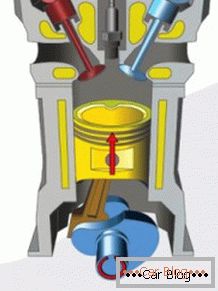
The third step in the principle of operation of the internal combustion engine - working stroke
The compression stroke is completed by the ignition of the combustible mixture as a result of an ignition spark. The gases obtained as a result of combustion have a larger volume; therefore, the piston moves down, and it moves the crankshaft through the connecting rod. This is called a duty cycle.
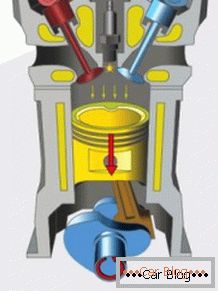
The fourth step in the operation of the internal combustion engine - release
The fourth beat is called release. When the piston is moved to the upper position, the intake valve opens. Now the gases can go outside and the cylinder gets ventilated.
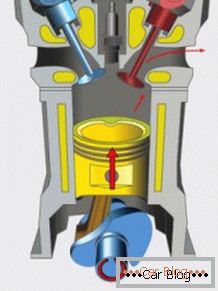
Modern internal combustion engines, types and principles of operation
The automotive market offers a lot of different types of engines, created according to a familiar principle.
Now we are accustomed to consider the carburetor engine a classic, which is usually mounted on the VAZ 2106. What is remarkable, it was created by our compatriot Ogneslav Kostovich. It happened in 1880, or a little later. Now there is no exact information about it. Nevertheless, it was the first step towards the emergence of what we used to consider the standard carburetor engine.
Recommended article: Skoda Fabia 2006-2014 years of release - affordable and compact carEngine performance has become more productive. Using this development, the Germans Daimler and Maybach (now these names are known to all motorists), created a lightweight version of the carburetor engine on gasoline. The first such engine was not a car from Germany, but a motorcycle.
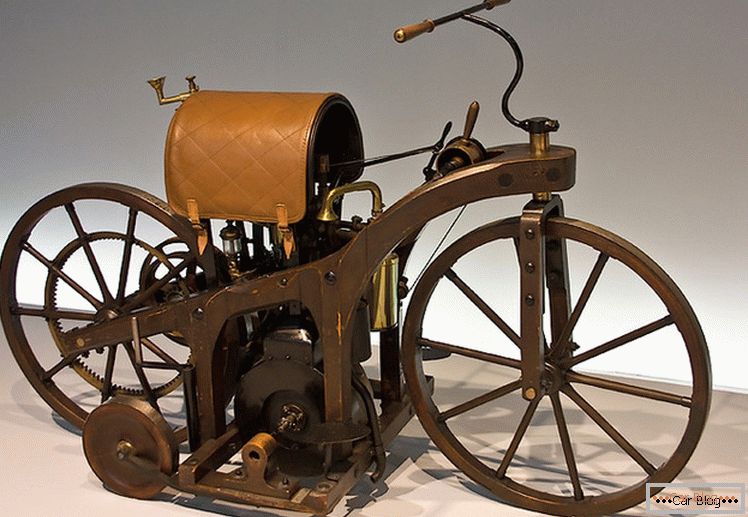
Diesel engines
It would seem that everything that could be invented has already been created. But, the talented inventor from Germany Rudolf Diesel did not think so. He was interested in how to still change and improve the principle of Otto. As a result of his work, another engine appeared, which is still used everywhere, especially in trucks.
What is the principle of the diesel engine? In such engines, diesel fuel, or as it is also called, diesel fuel, is injected at the right time under pressure. As a result, the combustible mixture is formed directly in the engine, where the particles of compressed fuel are connected to air and ignition occurs under pressure. 
Увидеть, how does an internal combustion engine можно здесь:



